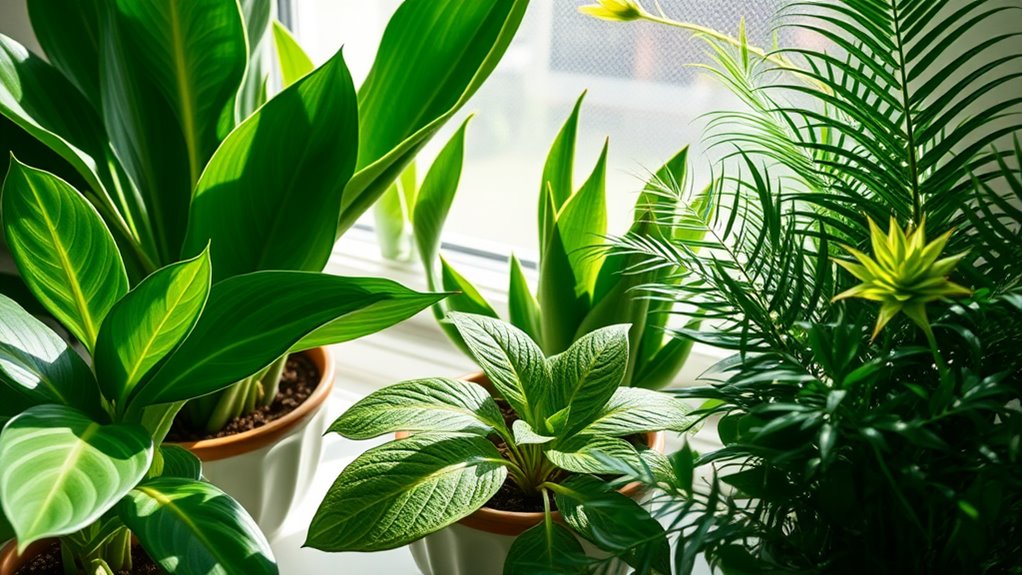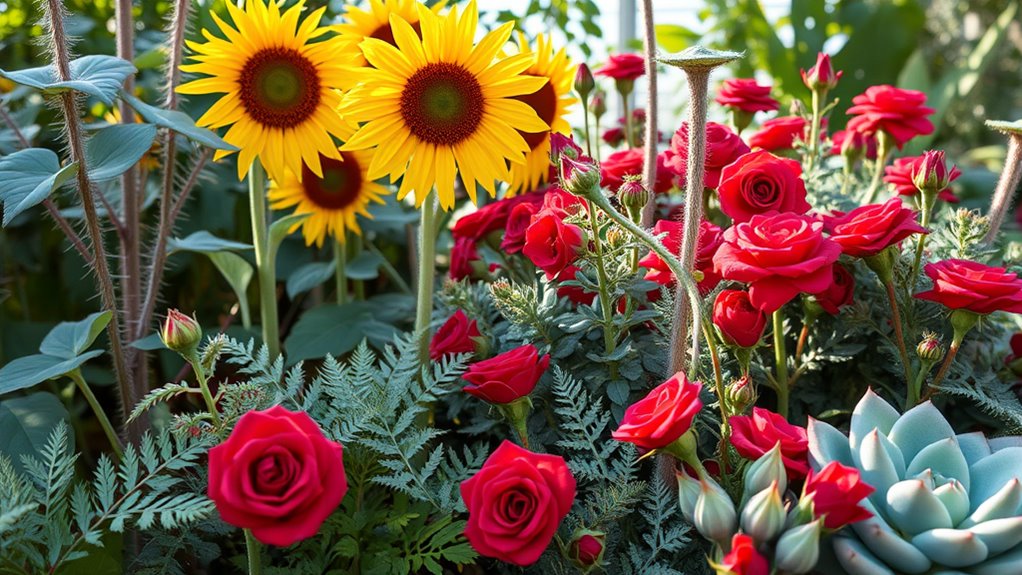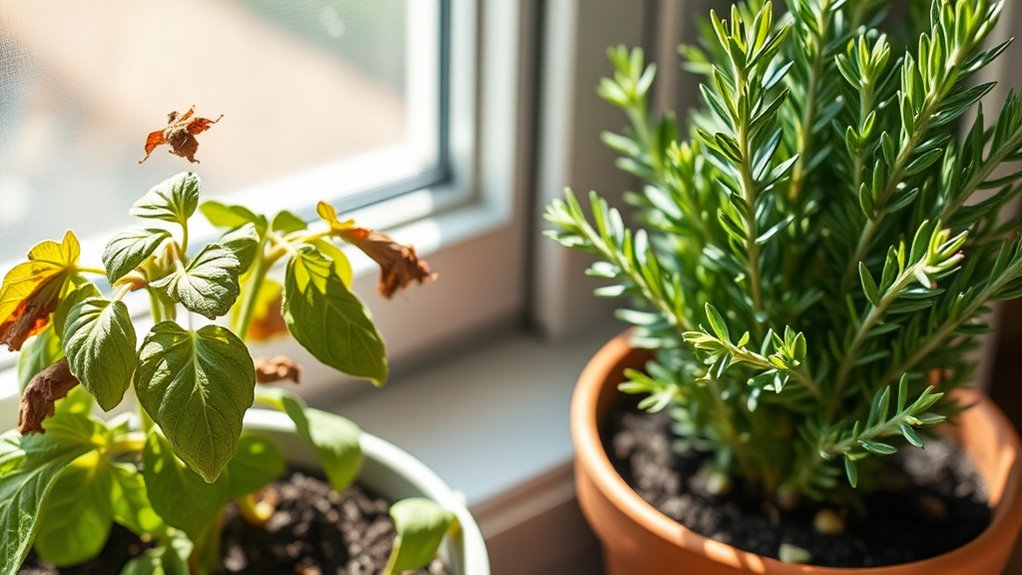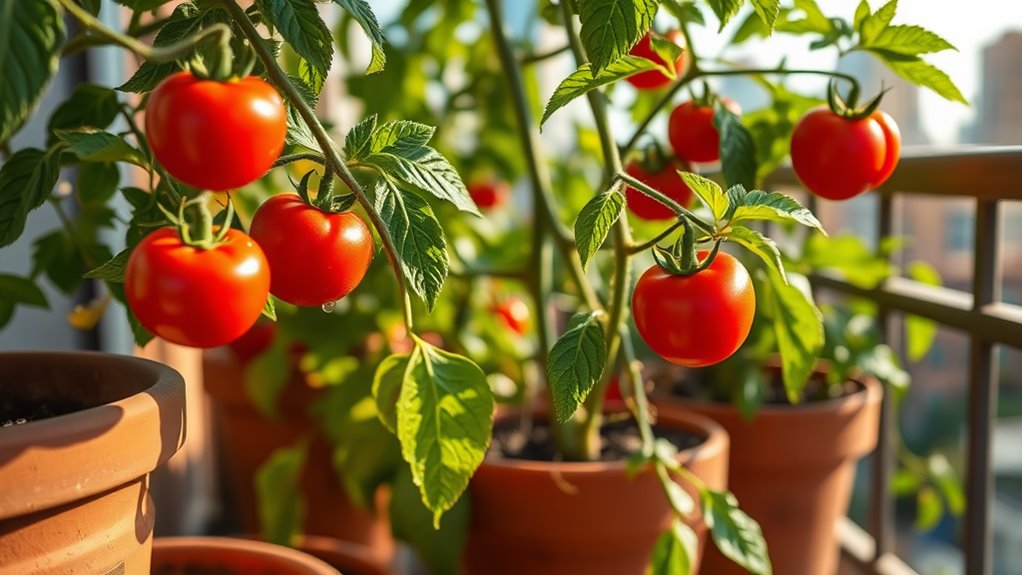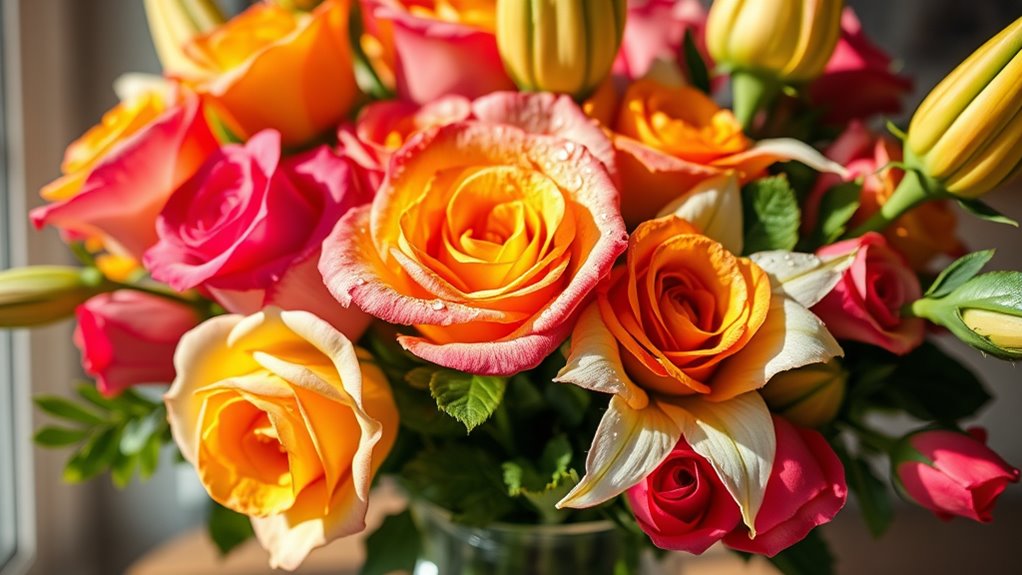These Indoor Plants Actually Clean the Air (According to Studies)
You’ll find that indoor plants like the snake plant and peace lily actually clean your air by removing toxins such as benzene and formaldehyde, as backed by NASA’s Clean Air Study and other research. These hardy plants absorb pollutants through their leaves and roots, while spider plants tackle carbon monoxide effectively. By choosing the right ones for your space, you’ll boost indoor air quality. Further insights on optimal plants and placement await in the details below.
Key Takeaways
- Studies like NASA’s Clean Air Study confirm that indoor plants effectively remove pollutants such as formaldehyde and benzene.
- Snake plants and peace lilies have been proven to filter toxins, including formaldehyde, in controlled environments.
- Spider plants reduce carbon monoxide levels, as supported by university research on air quality.
- Aloe vera and rubber plants purify indoor air in low-light and low-maintenance settings, according to scientific findings.
- Positioning 2-3 plants per 100 square feet can significantly improve air quality, based on evidence from air purification studies.
Top Air-Purifying Indoor Plants
When you want to improve your indoor air quality, the top air-purifying plants like the snake plant and peace lily do an excellent job of removing common toxins such as formaldehyde and benzene.
You can easily incorporate other air-purifying indoor plants, such as the spider plant, which handles carbon monoxide effectively, or the aloe vera for its low-maintenance appeal.
These plants thrive in various indoor conditions, enhancing your living space while filtering pollutants.
Choose based on your environment; for instance, the rubber plant suits low-light areas.
According to various scientific studies, these plants have been shown to significantly enhance indoor air quality by reducing harmful pollutants.
Scientific Evidence Behind Plant Effectiveness
Research shows that indoor plants effectively clean the air, as evidenced by NASA’s Clean Air Study, which tested various species in sealed environments.
You can trust these findings, as they demonstrated significant pollutant reduction in controlled settings. Other studies, such as those from the University of Georgia, support this by measuring improved air quality in offices and homes.
While results vary by plant and conditions, evidence consistently shows you’re breathing cleaner air with them around.
How These Plants Remove Indoor Pollutants
Indoor plants remove indoor pollutants primarily through their leaves and roots, where they absorb harmful chemicals like benzene and formaldehyde. As you observe this process, you’ll see how plants break down toxins via transpiration and microbial soil activity, converting them into harmless byproducts.
| Pollutant | Removal Method |
|---|---|
| Benzene | Absorbed and metabolized by roots |
| Formaldehyde | Taken in through leaves and degraded |
| VOCs (general) | Neutralized via plant-soil microbes |
This mechanism enhances your indoor air quality by actively filtering and purifying the environment you breathe. Additionally, to keep these plants thriving and effective, it’s essential to incorporate indoor pest control methods as part of a simple routine for maintaining their health.
Best Plants for Different Home Environments
Selecting the right plants for your home’s environment ensures optimal air purification.
In low-light spaces, you can’t go wrong with the snake plant; studies confirm it removes benzene and formaldehyde effectively.
For humid areas like bathrooms, peace lilies thrive and filter trichloroethylene.
If your sunny living room needs help, the spider plant actively reduces carbon monoxide.
In dry bedrooms, aloe vera excels, purifying air while adapting to low humidity.
Base your choices on light levels, moisture, and temperature for maximum pollutant removal, as backed by research.
Practical Ways to Use Plants for Cleaner Air
Once you’ve chosen plants for your home’s specific conditions, you can boost their air-cleaning power by strategically placing them where they matter most.
Think about high-pollution areas like kitchens and bedrooms, where plants can tackle VOCs and CO2 effectively. For example, position peace lilies near sinks to filter moisture and toxins, or use snake plants in low-light spots for nighttime purification.
Maintain them by watering consistently and ensuring good light; this keeps leaves healthy for optimal pollutant absorption. For those with busy schedules, consider low-maintenance plants that thrive with minimal care.
Studies suggest using two to three plants per 100 square feet for noticeable air quality improvements, without overcrowding for better circulation.
For beginners, consider easy-care indoor plants to ensure long-term success in maintaining a cleaner environment.

